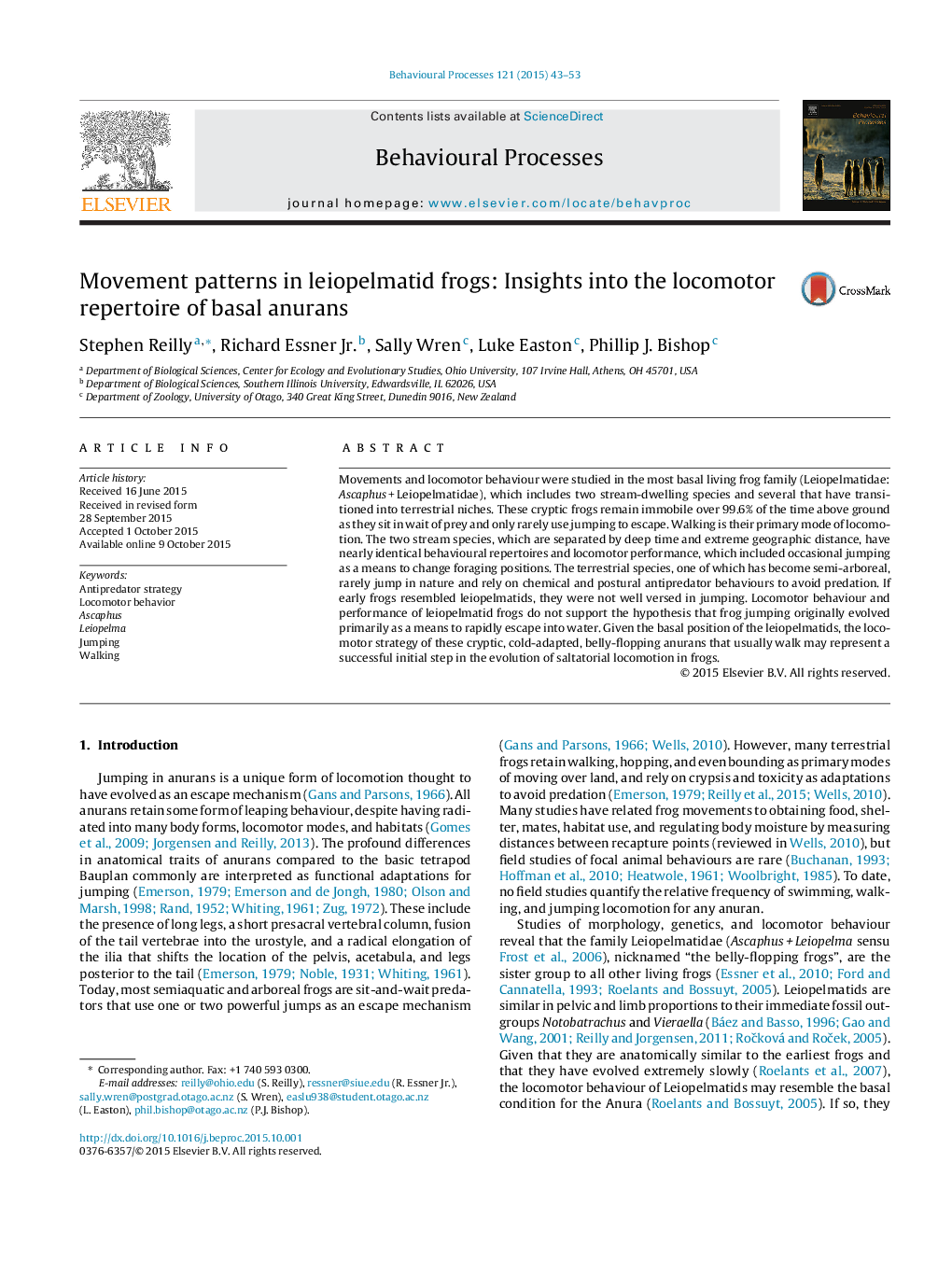| کد مقاله | کد نشریه | سال انتشار | مقاله انگلیسی | نسخه تمام متن |
|---|---|---|---|---|
| 2426477 | 1553159 | 2015 | 11 صفحه PDF | دانلود رایگان |
• We studied foraging behaviours, walking and jumping in primitive belly-flopping frogs.
• These frogs are extremely cryptic, sedentary, and prefer to walk when moving.
• Escape jumping was rare, only the stream species used jumping during foraging.
• Chemical antipredator adaptations arose with a loss of jumping in terrestrial species.
• Early frogs relied on crypsis and immobility instead of jumping to avoid predation.
Movements and locomotor behaviour were studied in the most basal living frog family (Leiopelmatidae: Ascaphus + Leiopelmatidae), which includes two stream-dwelling species and several that have transitioned into terrestrial niches. These cryptic frogs remain immobile over 99.6% of the time above ground as they sit in wait of prey and only rarely use jumping to escape. Walking is their primary mode of locomotion. The two stream species, which are separated by deep time and extreme geographic distance, have nearly identical behavioural repertoires and locomotor performance, which included occasional jumping as a means to change foraging positions. The terrestrial species, one of which has become semi-arboreal, rarely jump in nature and rely on chemical and postural antipredator behaviours to avoid predation. If early frogs resembled leiopelmatids, they were not well versed in jumping. Locomotor behaviour and performance of leiopelmatid frogs do not support the hypothesis that frog jumping originally evolved primarily as a means to rapidly escape into water. Given the basal position of the leiopelmatids, the locomotor strategy of these cryptic, cold-adapted, belly-flopping anurans that usually walk may represent a successful initial step in the evolution of saltatorial locomotion in frogs.
Figure optionsDownload as PowerPoint slide
Journal: Behavioural Processes - Volume 121, December 2015, Pages 43–53
